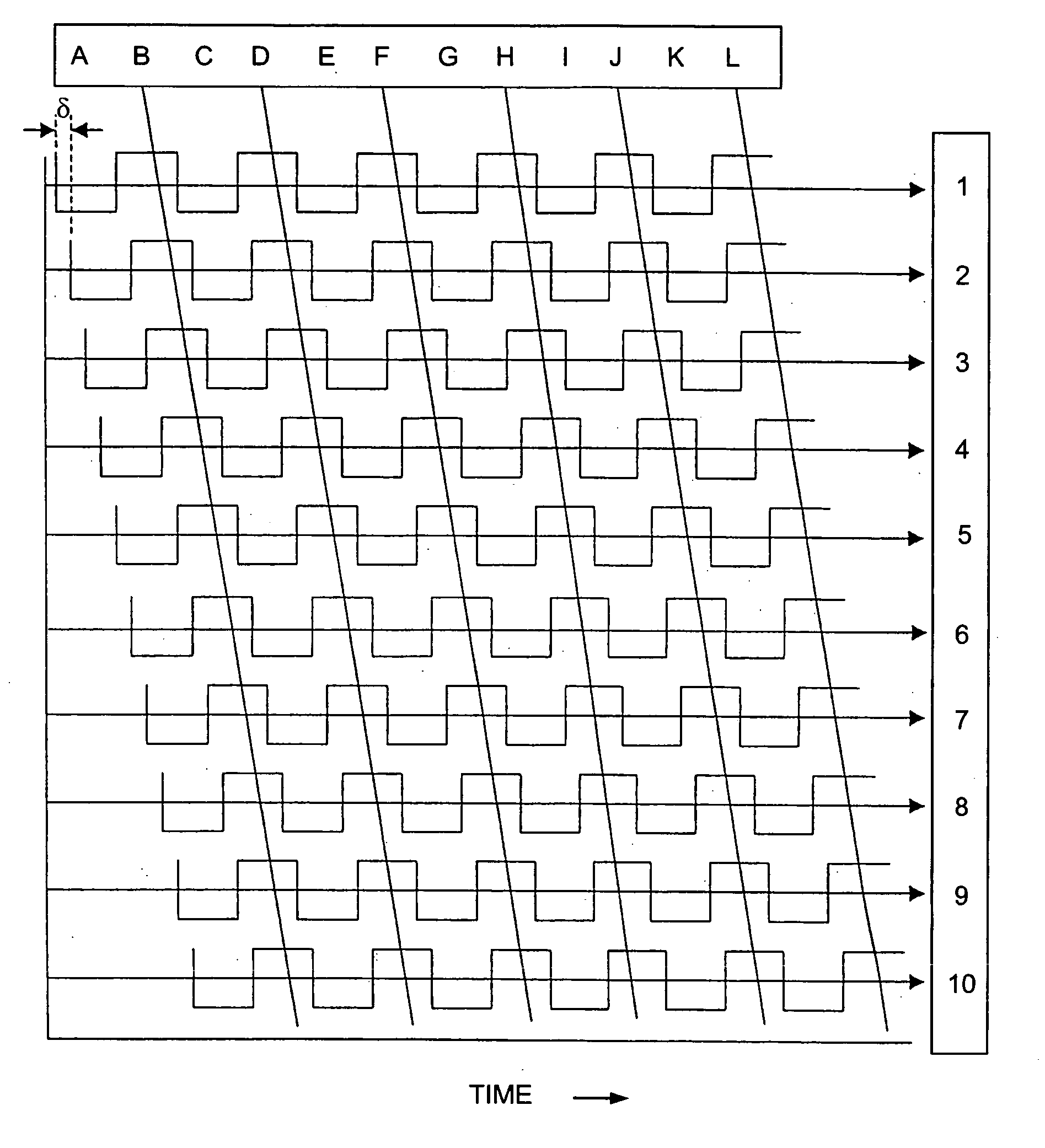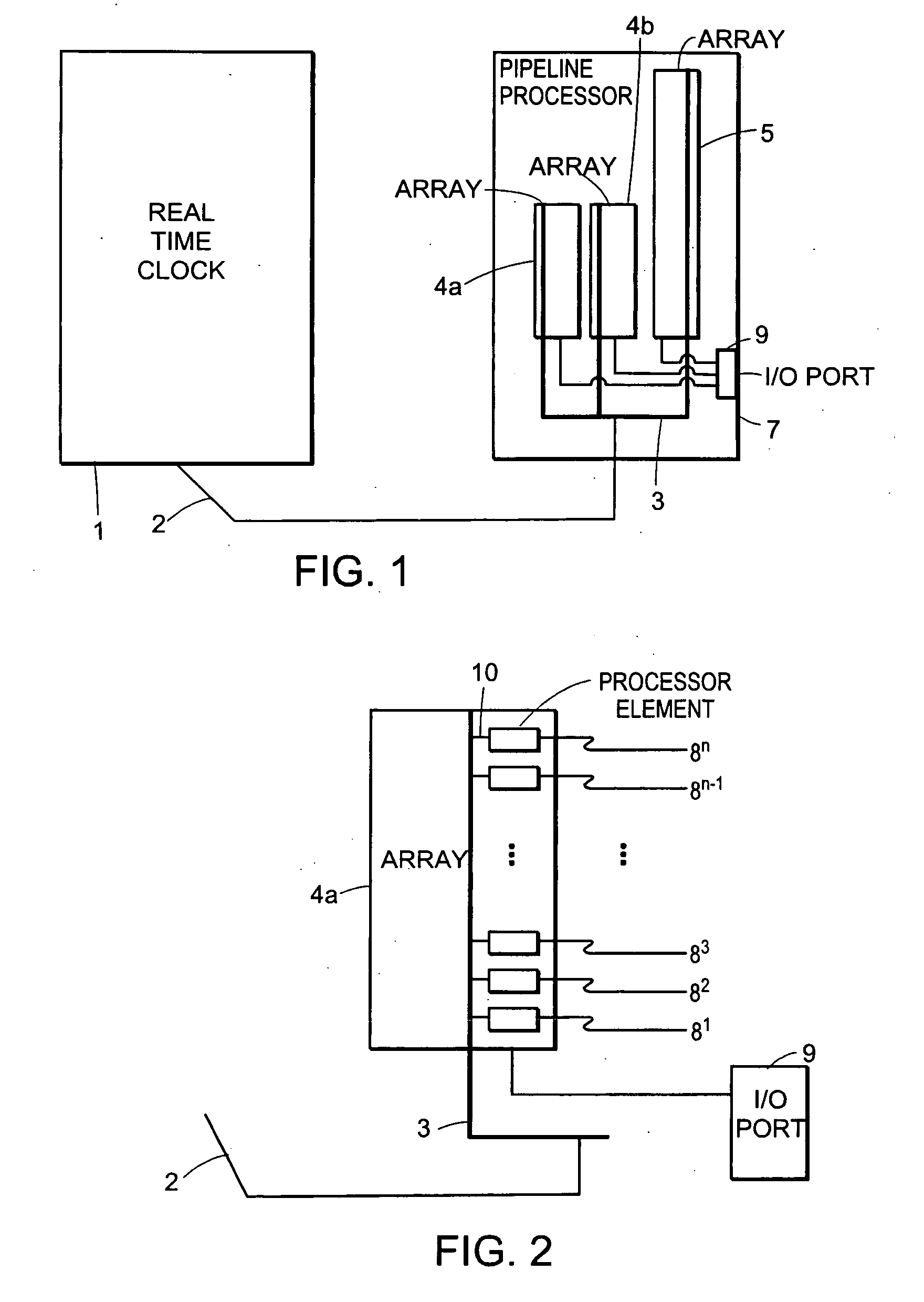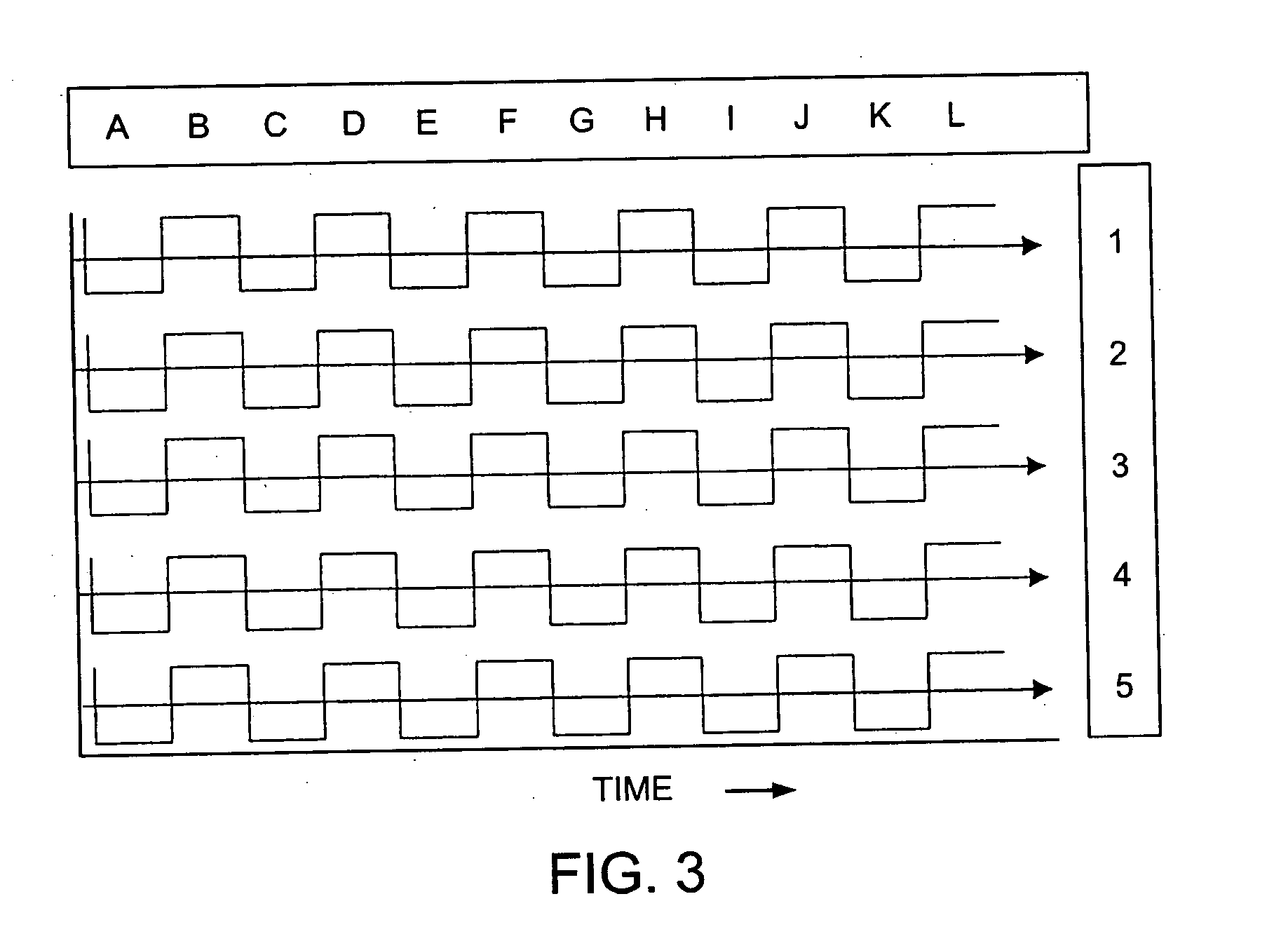[0075] It is an advantage of the present invention that each processor element needs only to communicate with two adjacent elements, such that an exact delay is always determinable and can easily be maintained within predetermined limits. It is a further advantage of the present invention that it is possible to isolate the circuit design to n adjacent processor elements, such that the entire pipeline processor is fabricated by laying down a series of n element “macros”. Of course, every once in a while it is necessary to connect one macro block to another, requiring additional circuitry to cope with an extra delay between processor elements of different macro blocks.
[0076] Alternatively, macros are designed for ease of interconnection such that a macro begins and ends in a fashion compatible with positioning another identical macro adjacent thereto for continued similar performance. In FIG. 9, a diagram of 2 macro blocks 91 and 92 according to the invention is shown. The macro blocks can be arranged in any of a series of arrangements as shown providing approximately consistent pathway delays between processing elements.
[0077] Referring to FIG. 6, shown is a simplified block diagram of a pipeline processor 12 according to a second preferred embodiment of the present invention. The pipeline processor 12 includes a plurality of arrays 4a, 4b and 5 of processor elements (processor elements not shown), for instance, arrays 4a and 4b each having 256 processing elements and array 5 having 512 processing elements. Dotted lines 6a and 6b indicate optional electrical coupling for providing electrical communication between the 256th processing element of array 4a and the 256th element of array 4b, and between the 1st element of array 4b and the 1st element of array 5, respectively. A distributed clock circuit 3 is separately in electrical communication with each processor element of the arrays 4a, 4b and 5. Also shown in FIG. 6 is a clock generator 1 in electrical communication with pipeline processor 12 via a hardware connection 2. An input / output port 9 in communication with the first processing element of each array 4a, 4b, and 5 is for receiving data provided by a client station (not shown), also in operative communication with input / output port 9, the data for processing by an indicated one of the arrays 4a, 4b, and 5.
[0078] Referring to FIG. 7, shown is a simplified block diagram of a pipeline processor 13 according to a third preferred embodiment of the present invention. The pipeline processor 13 includes a plurality of arrays 4a, 4b and 5 of processor elements (processor elements not shown), for instance, arrays 4a and 4b each having 256 processing elements and array 5 having 512 processing elements. The 256th processing element of array 4a and the 256th element of array 4b are in electrical communication via the hardware connection 11a, and the 1st element of array 4b and the 1st element of array 5 are in electrical communication via the hardware connection 11b, respectively. A distributed clock circuit 3 is separately in electrical communication with each processor element (not shown) of the arrays 4a, 4b and 5. Also shown in FIG. 7 is a real time clock 1 in electrical communication with pipeline processor 13 via a hardware connection 2. An input / output port 9 in communication with the first processing element of array 4a is for receiving data provided by a client station (not shown), also in operative communication with input / output port 9, the data for processing by the serial arrangement of the arrays 4a, 4b, and 5. Optionally, separate inputs (not shown) are provided for gating data directly to at least a processor element other than the 1st element of array 4a.
[0079] The pipeline processors 12 and 13 of FIGS. 6 and 7, respectively, are operable in mode wherein data gated into the 256th processor element of the array 4a is made available to the 256th processor element of array 4b. For instance, when more than 256 processor elements are required for a particular processing operation, the effective length of the processor array is increased by continuing the processing operation within a second different array. Of course, when more than 512 processor elements are required for a particular processing operation, the effective length of the processor array is increased by continuing the processing operation within a third different array. For example, either one of the pipeline processors shown in FIGS. 6 and 7 are operable for performing: 256 bit encryption using a single array; 512 bit encryption using two different arrays; and, 1024 bit encryption using all three different arrays. Of course, optionally the 256th processor element of array 4a is coupled to the 1st element of array 4b, but then both the 256th element of array 4a and the 1st element of array 4b must be synchronized with each other and with the buffer. Such synchronization requirements increase the circuit design complexity due to the critical need for a uniform distributed clock. Also, in most pipeline processor arrangements it is necessary that each element provide processing operations during each clock cycle and often, clock synchronization imposes a wait state which would cause the 257th element in the array to process data one clock cycle later than the earlier elements.
[0080] Of course, when the 256th element of array 4a is coupled to the 256th element of array 4b, either optionally as shown in FIG. 6 or permanently as shown in FIG. 7, the advantage of “bi-directional averaging” is lost. Advantageously, however, a plurality of separate arrays of processor elements, each array preferably comprising a same number of processor elements, is connectable in such a head-to-tail fashion. Then, the clock signal is delayed progressively along every second array, but catches-up again in between.
 Login to view more
Login to view more  Login to view more
Login to view more 


